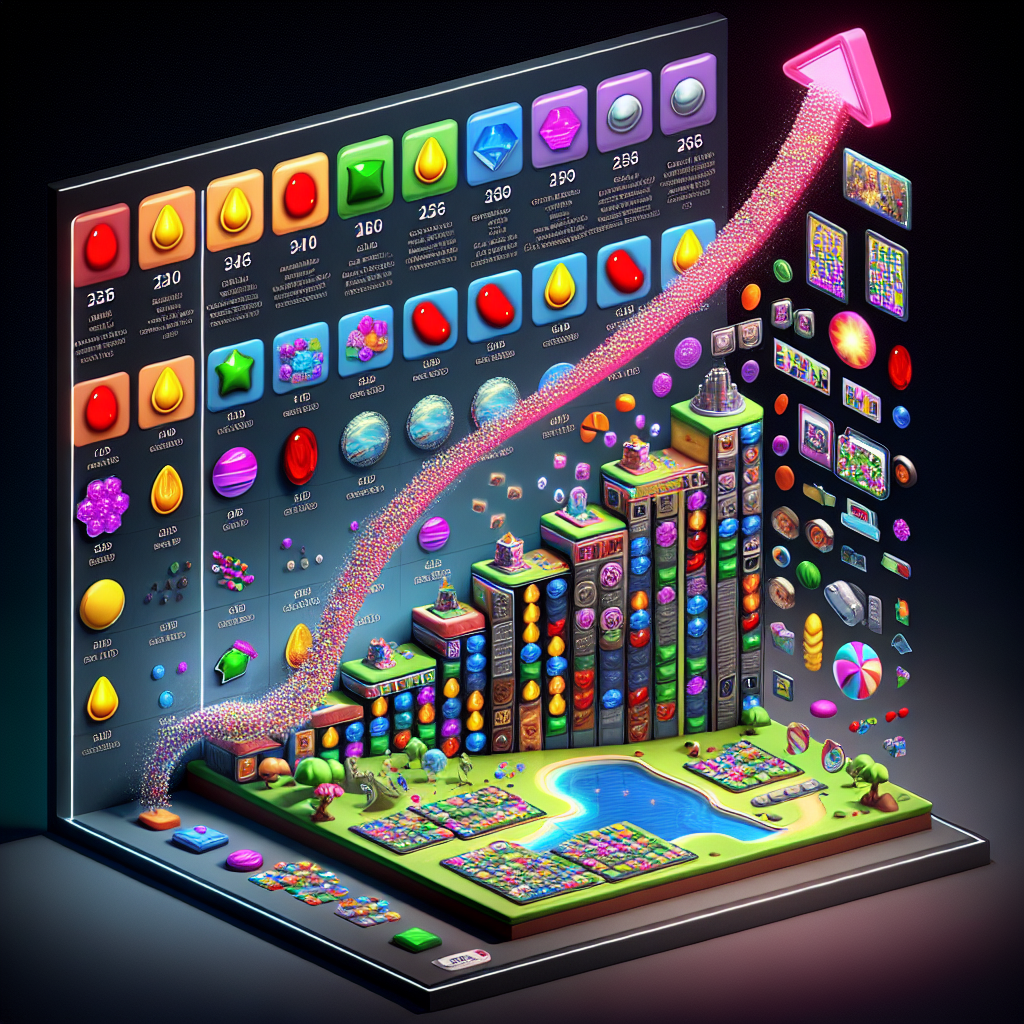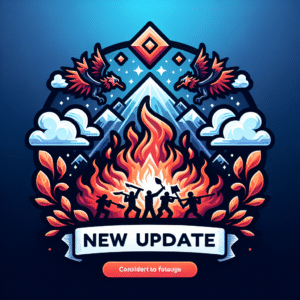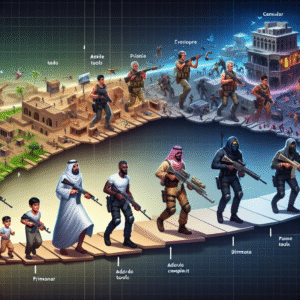The Evolution of Candy Crush Saga: From Launch to Today
Candy Crush Saga began its sugary journey in April 2012, capturing the hearts of millions worldwide. This match-three puzzle game, developed by King, emerged as a simple, yet highly addictive mobile game that quickly revolutionized the mobile gaming industry. Its evolution from a Facebook game into a mobile phenomenon is an intriguing tale of strategic development, innovative marketing, and community building.
In its early days on Facebook, Candy Crush Saga drew users in with its vibrant graphics and engaging gameplay. The premise was simple: players had to match three or more candies of the same color to clear levels and earn points. This seemingly straightforward concept was ingeniously enhanced with an escalating difficulty curve and the addition of various obstacles and boosters, ensuring that players were constantly challenged and entertained. The game’s social features on Facebook, including the ability to see friends’ progress and request lives, fostered a sense of camaraderie and competition among players, propelling its popularity.
Recognizing the game’s potential beyond Facebook, King smartly transitioned Candy Crush Saga to mobile platforms. This move in November 2012 was pivotal, aligning with the burgeoning rise of smartphones and mobile gaming. By migrating to iOS and Android devices, Candy Crush Saga became accessible to a broader audience, allowing players to enjoy the game anytime and anywhere. This flexibility played a crucial role in its meteoric rise, coinciding with the growing trend of on-the-go entertainment.
A significant factor in Candy Crush Saga’s enduring success is its freemium model. Players can download and play the game for free, with options to purchase in-game items like boosters and additional lives. This model has proven incredibly effective, generating substantial revenue while maintaining a broad player base. The game’s ability to monetize without alienating its users demonstrates a delicate balance between enticing purchases and ensuring an enjoyable free experience. King continuously refines this model, introducing new in-game purchases that enhance gameplay without necessitating them for progression.
As Candy Crush Saga conquered mobile gaming, King leveraged data analytics to refine and expand the game. By analyzing player behavior and Level completion rates, the development team constantly tweaks existing levels, introduces new challenges, and iterates on game mechanics to maintain player engagement. This data-centric approach ensures that the game remains fresh and challenging, addressing player feedback and evolving tastes.
King’s strategic deployment of regular updates and seasonal events is another critical component of Candy Crush Saga’s evolution. By routinely releasing new levels and content, the game maintains a dynamic experience. Seasonal events introduce timed challenges and unique rewards, tapping into the cultural zeitgeist and promoting increased in-game activity. Through these updates, King keeps the player community engaged, preventing fatigue and ensuring that the game remains a part of their daily routine.
The game’s vibrant aesthetics and catchy sound effects significantly contribute to its appeal. Early on, the developers invested time in creating a visually stimulating environment with colorful candies, diverse backdrops, and whimsical characters like Tiffi and Mr. Toffee. The delightful graphics are complemented by engaging soundtracks and sound effects that enhance gameplay immersion. This attention to visual and auditory detail creates an inviting atmosphere that encourages prolonged play and fosters brand recognition.
Candy Crush Saga’s marketing strategies also played a pivotal role in its evolution. Throughout its lifecycle, King has implemented a mix of organic social media engagements and high-profile advertising campaigns to boost visibility and user acquisition. Collaborations with celebrities and major brands have expanded the game’s reach, attracting new demographics and revitalizing interest among lapsed players. Furthermore, King’s engagement with its community through social media platforms and newsletters ensures that players feel valued and connected, fostering a loyal fanbase.
The game’s impact extends beyond its own ecosystem, influencing the broader mobile gaming industry. Candy Crush Saga set new standards for casual game design, monetization models, and player engagement strategies. Its success sparked a wave of similar match-three games and established the freemium model as a viable approach for mobile game developers worldwide. The game’s influence is evident as developers continually seek to replicate its success through meticulous design and player-focused strategies.
Internationally, Candy Crush Saga has adapted to diverse markets through localization efforts. By customizing content to resonate with cultural nuances and preferences, King has successfully penetrated various regional markets. The game’s availability in multiple languages and culturally relevant events and promotions ensure a broad and inclusive appeal, granting it a worldwide footprint.
King has expanded the Candy Crush universe with sequels and spin-offs, including Candy Crush Soda Saga, Candy Crush Jelly Saga, and Candy Crush Friends Saga. These iterations build on the original’s addictive formula, introducing new elements, mechanics, and storylines to captivate both new and returning players. Each spin-off offers a fresh experience while retaining the core traits of the original, ensuring familiarity and nostalgia alongside innovation.
Community engagement and player support are central to Candy Crush Saga’s sustained success. King fosters an active player community through online forums, social media groups, and direct feedback channels. These platforms facilitate player interaction, tips sharing, and feedback submission, creating a vibrant ecosystem of support and connection. Additionally, King’s customer service approach, featuring responsive support teams and comprehensive help resources, ensures that players remain satisfied and their issues are addressed promptly.
Looking at the technological advancements over the years, Candy Crush Saga has consistently embraced new technologies to enhance gameplay. The integration of cloud saving features, for instance, allows players to seamlessly sync progress across devices, enabling an uninterrupted gaming experience. The game has also adapted to advancements in graphic rendering and processing power, continuously enhancing its visual appeal and performance on newer devices.
As Candy Crush Saga continues to evolve, King is likely to focus on integrating emerging technologies such as augmented reality and artificial intelligence to further enhance the gaming experience. The potential for AR-driven gameplay features could introduce a new dimension of interactivity, while advanced AI could offer personalized challenges tailored to individual player skills and preferences, further cementing the game’s versatility and appeal.
Candy Crush Saga’s global impact extends to academic research, where its addictive qualities and success strategies are analyzed within the context of game design, psychology, and consumer behavior. Its well-documented trajectory from a simple Facebook game to a global phenomenon provides valuable insights into player engagement, retention strategies, and market adaptation for aspiring game developers and marketers.
By continuing to adapt and innovate, Candy Crush Saga remains a staple in the mobile gaming sector, continually redefining what it means to be a successful digital entertainment product. Its evolution is a testament to King’s forward-thinking approach and dedication to creating immersive, enjoyable experiences for players worldwide, ensuring its legacy for years to come.












Post Comment